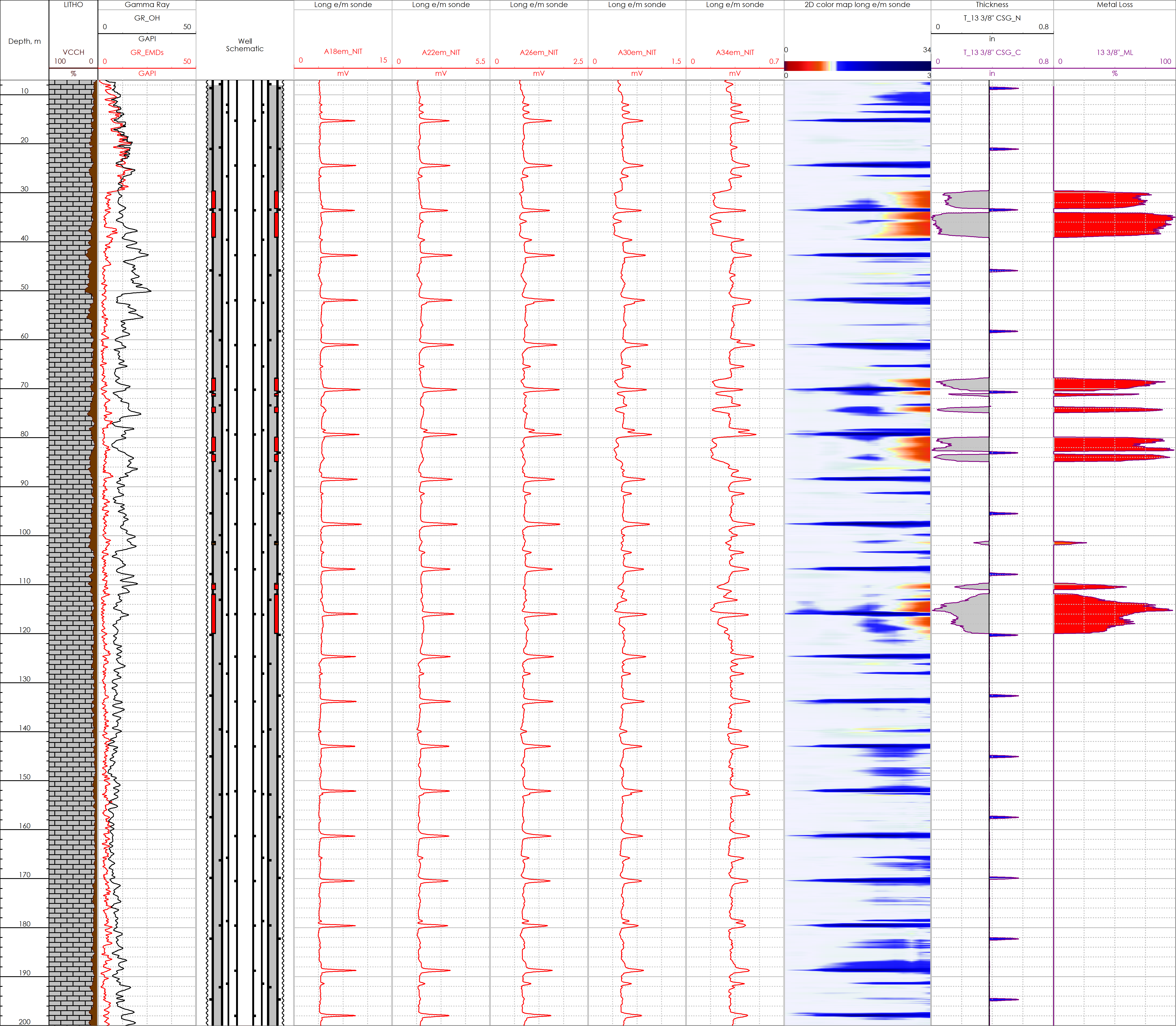Integrity Challenge
Drilling through a loss zone leads to a high probability of poor cement quality and free pipe. If there is a corrosive aquifer, the possibility of external corrosion is increased drastically. It is critical to understand the integrity of the pipe across these areas. Regular logging is recommended to identify when corrosion will migrate from the outer to the inner pipes. This will enable a remedial program such as installing a scab liner to be planned before a catastrophic failure.
Corrosion Logging Result
One example when corrosion logging was run in a 4 barrier well (strings) and metal loss on the outer casing was detected is shown below:
The well is a vertical oil producer drilled in 1989. The well was completed with a 13 3/8” surface casing, a 9 5/8” intermediate casing, and a tapered 7 5/8” x 6 5/8” gravel pack (GP) and wire wrapped screens (WWS) extension which was run across the open hole section. A 3.5” beam pump (BP) completion string was run. In 2017 a Hoist attended the well. The completion string was pulled. The 9 5/8” casing was successfully pressure tested. However, as a proactive measure a 7” scab liner was installed. A 4.5” BP completion was run.
In 2021a Hoist attended the well due to a pump failure. The completion string was pulled. To further minimize sand production which had caused the pump to fail an additional 4.5” WWS was installed across the original 7 5/8” x 6 5/8” GP and WWS. A 3.5” BP completion was run.
In 2022 EMDs corrosion logging was conducted. The log data indicated multiple intervals of severe metal loss in the 13 3/8” casing at the shallow section of the well. The was no corrosion evident in the 9 5/8” casing. The maximum metal loss in the 13 3/8” casing was almost 100%. The well had two effective barriers in the upper section of the well i.e. the 7” scab liner and the 9 5/8” intermediate casing. It is therefore recommended to monitor the well on a regular basis to identify if the corrosion in the 13 3/8” casing is migrating to the inner strings. The data will also be used to calculate the annual corrosion rate.
All case studies
Looking for more information?
Get in touch with us and our representative will get back to you
Contact Us



